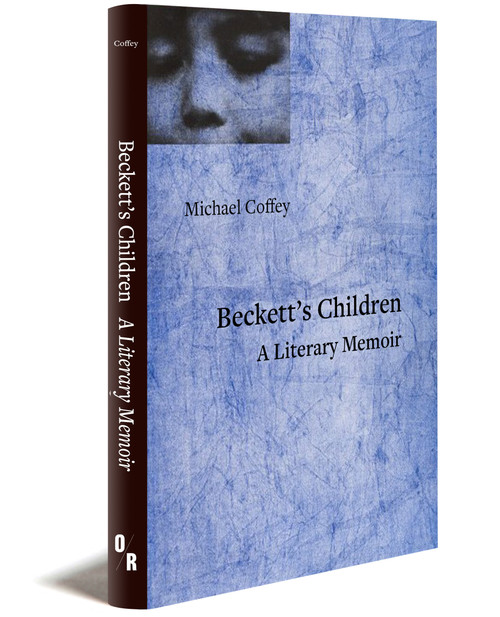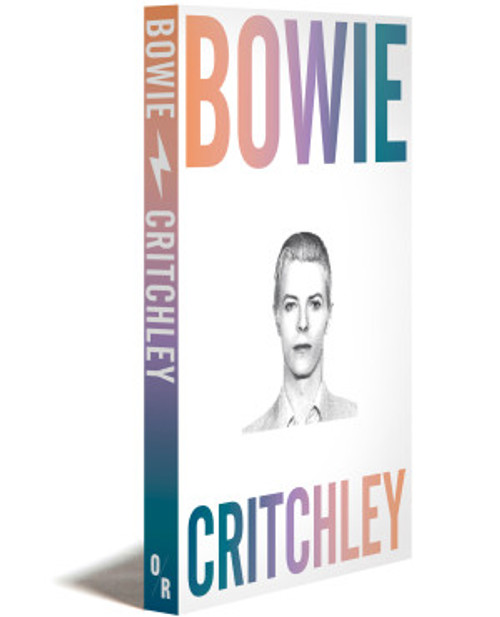Beckett's Children
“An important addition to the world of adoption stories—very few by men and none as deep and thoughtful as this.”
—A. M. Homes“Dark, brooding, precise, difficult, daring . . . an incomparable piece of writing.”
—Barry Schwabsky“I read this beautiful book all in one sitting. It is stunning—poetic and profound.”
—Lois Oppenheim“A potent and personal reflection on paternity.”
—Publishers Weekly“Lyrical...intimate and revealing. Quite different from traditional scholarship.”
—Times Literary Supplementabout the bookabout
Beckett’s Children is a lyrical blend of personal memoir, father-son dialogue, and literary investigation that probes the works of Irish writer Samuel Beckett and American poet Susan Howe in search of traces of their long-rumored status as father and daughter. Although Howe has denied the rumor, the possibility that it might be true leads Coffey to a highly original appreciation of her work and a fascinating focus on the dozens of unattended children who wander through Beckett’s oeuvre.
The saga of Coffey’s adult son, at various moments on the run in the Indiana woods or incarcerated, shines light on life without parental connection in a cold America. As an adoptee himself, Coffey looks to literature for traces of his own origin story and lineage, a heritage held in secret by a closed adoption system but which, through books and cultural signs, he has been able to decipher in his own way.
Provocative and beautifully expressed, Beckett’s Children suggests a new approach to the textual worlds of two highly respected artists, providing a revelatory perspective on both American poetics and the vibrant world of Beckett studies.
“The force of Coffey’s personal abyss asserts the form the book itself takes. Susan Howe emerges here as someone soldering her own abyss....As for the Beckett side of this story, I think it is right to contest the taboo.”
—Seán Kennedy
About The Author / Editor
Preview
I would turn sixty in a couple of days. My wife suggested I do something for myself around my birthday, not in lieu of a nice dinner, as was our custom, but as something extra. So I ventured uptown on a bright, cold Sunday morning to the 92nd St Y. The 11 a.m. event—with bagels and coffee—featured two of the editors of The Letters of Samuel Beckett, Martha Dow Fehsenfeld and Lois More Overbeck.
I owned all three of the volumes thus far published—there would be a fourth in two years’ time. I had even reviewed the inaugural volume for Publishers Weekly. I had been reading Beckett since my junior year of college, spent in Dublin, but in the last four or five years I had been reading him more intensely, not yet exclusively, but with a scholarly focus I humored myself to think was unique.
I was among the youngest in attendance that morning, surrounded by those my seniors, mostly women. One who sat near me insisted I take the seat next to her, which she patted with her hand, telling me, “you’re sitting here,” and who wore a crooked ginger-colored wig and a layer of makeup between pink and orange, who four times asked me my name, and then where was I born, and then proudly declared that she, too, was a New Yorker by birth, born in “the only borough connected to the mainland of the United States—the Bronx. The rest are just islands, you know.” All of these YMCA patrons arrived early to this 11 a.m. event, even the speakers—so the room sat still at near capacity for twenty minutes before things commenced, but which allowed me to take a good look around. In front of me sat a tiny, elegant, very thin woman, bent over quite a bit like a shepherd’s crook, her hair a kind of grey-purple, done just so. She sat with her mouth open and one ear cocked trying to listen as people came by to make a fuss. She was Judith Schmidt, I was able to glean, who had worked at Grove Press and with whom, a bit later, in front of all, I would discuss at some volume, her accompanying Mr. Beckett around town on his only visit to New York during the making of Film with Buster Keaton in 1964. She drove Grove editor Richard Seaver and Beckett to a ballpark to see baseball’s two worst teams match wits for a double-header. In recounting the event, Judith said that Beckett was “a lovely, lovely, lovely man.” She said baseball like “base-bool” and man like “me-ann.” I was very happy to have met Judith Schmidt Douw, who would live only a few months more.
Marty and Lois were introduced by the director of programming at the Y. The two women stood at separate podiums in a modest-sized room with 50 or so people in folding chairs. There was some recounting of this enormous project now coming to fruition. Marty or Lois explained how Beckett kept no letters received nor carbons of letters sent. Each letter or postcard had to be located, recipient by recipient, and in the case of the many handwritten ones, the nearly indecipherable Beckett handwriting had to be transcribed, whether from French or English. Someone asked a question: was Beckett left-handed or right-handed? These women, who have been editing the letters for decades, did not know. I was surprised. I piped up that his right hand had developed an arthritic condition as he aged and I had read that his handwriting was not good as a result so he must have been right-handed. Lois countered, sort of, that his handwriting was never good, so that was inconclusive. Marty said that after she’d first shaken Beckett’s hand, she said to his close Dublin friend Con Leventhal, “Odd, but he held a pencil in his hand.” And Con told her that was just the finger. Lois gave the name for the condition: Dupuytren’s contracture, sometimes known as “the Celtic hand.” I asked her to spell it; she did.
I did not ask any questions in the Q&A, though I did answer one. Someone asked, when did Beckett die, and the editors momentarily drew a blank and I piped up, “Twenty-five years ago, 1989.” At the end, I did approach Lois Overbeck at the podium, with congratulations and sincere expressions of admiration for the scholarship and care in bringing the letters to light, and asked my question, the question I thought at the heart of my singular scholarly interest in an unexplored area of the Beckett life. “No, no,” said Lois. “Do the math.” I’d heard that before, but I had done the math, and I did not think that the math—that is the calendar of days and the period of human gestation--ruled out the possibility that Beckett had fathered a daughter, who was alive and living in Connecticut and a poet.
in the media
Beckett's Children
“An important addition to the world of adoption stories—very few by men and none as deep and thoughtful as this.”
—A. M. Homes“Dark, brooding, precise, difficult, daring . . . an incomparable piece of writing.”
—Barry Schwabsky“I read this beautiful book all in one sitting. It is stunning—poetic and profound.”
—Lois Oppenheim“A potent and personal reflection on paternity.”
—Publishers Weekly“Lyrical...intimate and revealing. Quite different from traditional scholarship.”
—Times Literary Supplementabout the bookabout
Beckett’s Children is a lyrical blend of personal memoir, father-son dialogue, and literary investigation that probes the works of Irish writer Samuel Beckett and American poet Susan Howe in search of traces of their long-rumored status as father and daughter. Although Howe has denied the rumor, the possibility that it might be true leads Coffey to a highly original appreciation of her work and a fascinating focus on the dozens of unattended children who wander through Beckett’s oeuvre.
The saga of Coffey’s adult son, at various moments on the run in the Indiana woods or incarcerated, shines light on life without parental connection in a cold America. As an adoptee himself, Coffey looks to literature for traces of his own origin story and lineage, a heritage held in secret by a closed adoption system but which, through books and cultural signs, he has been able to decipher in his own way.
Provocative and beautifully expressed, Beckett’s Children suggests a new approach to the textual worlds of two highly respected artists, providing a revelatory perspective on both American poetics and the vibrant world of Beckett studies.
“The force of Coffey’s personal abyss asserts the form the book itself takes. Susan Howe emerges here as someone soldering her own abyss....As for the Beckett side of this story, I think it is right to contest the taboo.”
—Seán Kennedy
About The Author / Editor
Preview
I would turn sixty in a couple of days. My wife suggested I do something for myself around my birthday, not in lieu of a nice dinner, as was our custom, but as something extra. So I ventured uptown on a bright, cold Sunday morning to the 92nd St Y. The 11 a.m. event—with bagels and coffee—featured two of the editors of The Letters of Samuel Beckett, Martha Dow Fehsenfeld and Lois More Overbeck.
I owned all three of the volumes thus far published—there would be a fourth in two years’ time. I had even reviewed the inaugural volume for Publishers Weekly. I had been reading Beckett since my junior year of college, spent in Dublin, but in the last four or five years I had been reading him more intensely, not yet exclusively, but with a scholarly focus I humored myself to think was unique.
I was among the youngest in attendance that morning, surrounded by those my seniors, mostly women. One who sat near me insisted I take the seat next to her, which she patted with her hand, telling me, “you’re sitting here,” and who wore a crooked ginger-colored wig and a layer of makeup between pink and orange, who four times asked me my name, and then where was I born, and then proudly declared that she, too, was a New Yorker by birth, born in “the only borough connected to the mainland of the United States—the Bronx. The rest are just islands, you know.” All of these YMCA patrons arrived early to this 11 a.m. event, even the speakers—so the room sat still at near capacity for twenty minutes before things commenced, but which allowed me to take a good look around. In front of me sat a tiny, elegant, very thin woman, bent over quite a bit like a shepherd’s crook, her hair a kind of grey-purple, done just so. She sat with her mouth open and one ear cocked trying to listen as people came by to make a fuss. She was Judith Schmidt, I was able to glean, who had worked at Grove Press and with whom, a bit later, in front of all, I would discuss at some volume, her accompanying Mr. Beckett around town on his only visit to New York during the making of Film with Buster Keaton in 1964. She drove Grove editor Richard Seaver and Beckett to a ballpark to see baseball’s two worst teams match wits for a double-header. In recounting the event, Judith said that Beckett was “a lovely, lovely, lovely man.” She said baseball like “base-bool” and man like “me-ann.” I was very happy to have met Judith Schmidt Douw, who would live only a few months more.
Marty and Lois were introduced by the director of programming at the Y. The two women stood at separate podiums in a modest-sized room with 50 or so people in folding chairs. There was some recounting of this enormous project now coming to fruition. Marty or Lois explained how Beckett kept no letters received nor carbons of letters sent. Each letter or postcard had to be located, recipient by recipient, and in the case of the many handwritten ones, the nearly indecipherable Beckett handwriting had to be transcribed, whether from French or English. Someone asked a question: was Beckett left-handed or right-handed? These women, who have been editing the letters for decades, did not know. I was surprised. I piped up that his right hand had developed an arthritic condition as he aged and I had read that his handwriting was not good as a result so he must have been right-handed. Lois countered, sort of, that his handwriting was never good, so that was inconclusive. Marty said that after she’d first shaken Beckett’s hand, she said to his close Dublin friend Con Leventhal, “Odd, but he held a pencil in his hand.” And Con told her that was just the finger. Lois gave the name for the condition: Dupuytren’s contracture, sometimes known as “the Celtic hand.” I asked her to spell it; she did.
I did not ask any questions in the Q&A, though I did answer one. Someone asked, when did Beckett die, and the editors momentarily drew a blank and I piped up, “Twenty-five years ago, 1989.” At the end, I did approach Lois Overbeck at the podium, with congratulations and sincere expressions of admiration for the scholarship and care in bringing the letters to light, and asked my question, the question I thought at the heart of my singular scholarly interest in an unexplored area of the Beckett life. “No, no,” said Lois. “Do the math.” I’d heard that before, but I had done the math, and I did not think that the math—that is the calendar of days and the period of human gestation--ruled out the possibility that Beckett had fathered a daughter, who was alive and living in Connecticut and a poet.










